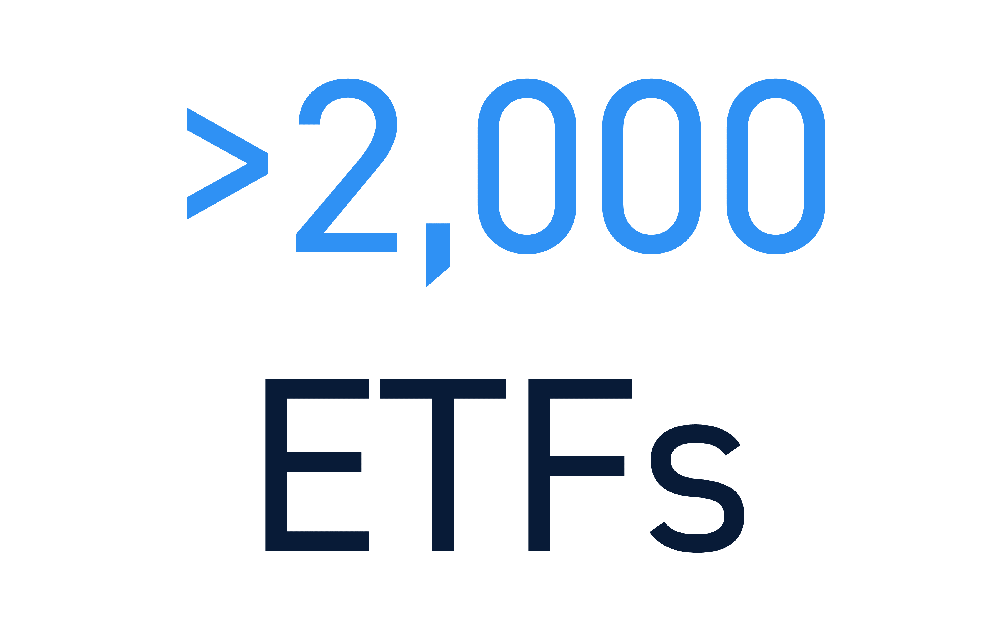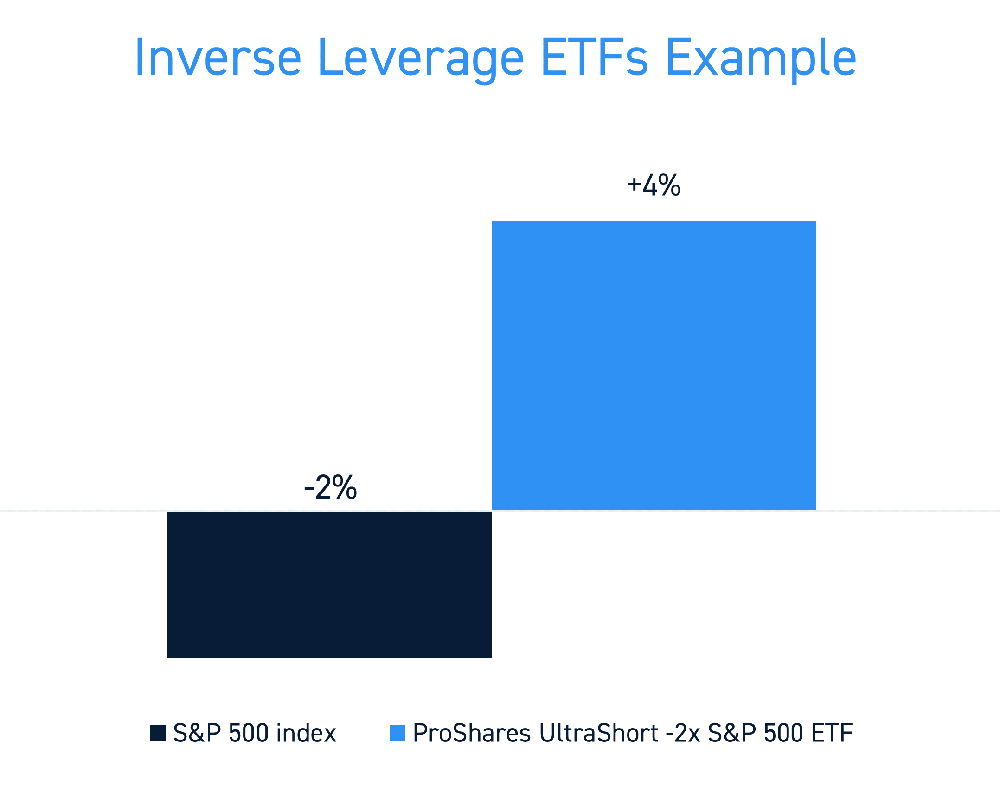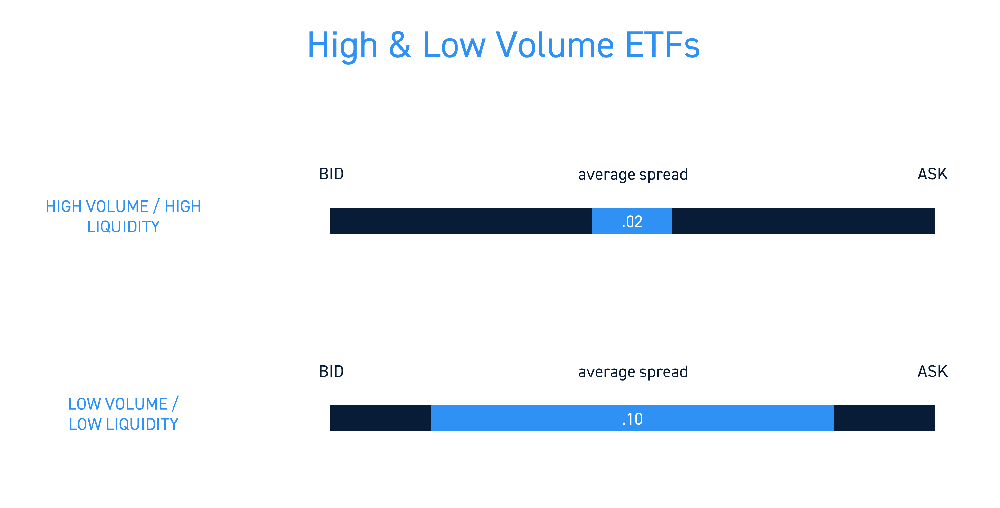Exchange traded funds (ETFs) have grown in both popularity and utility over the years. They’ve gone mainstream thanks to marketing campaigns and financial fintech apps centered around Modern Portfolio Theory (MPT) based investment strategies. With over 2,000 ETFs, the universe continues to grow with more exotic themes and broadening range of underlying assets. These financial instruments can provide many opportunities for self-directed Investors and active traders who understand how they operate. Here’s a guide to getting started on trading ETFs.

What Is An ETF?
An ETF is a fund that holds, tracks, or mirrors a portfolio of holdings related to an industry, sector, index, asset class or a theme. ETFs are like mutual funds that trade like stocks. This means they can be bought, sold or shorted before, during and after market hours. Their transparency, convenience and liquidity make them incredibly attractive to passive investors seeking diversification and traders seeking ways to trade groups of assets under a single instrument. While they trade like stocks, there are distinct differences to be aware of.
ETFs vs. Stocks
ETFs can be traded both long and short just like stocks. However, ETFs represent many holdings under one symbol while individual stocks represent only the shares of the underlying company. They also don’t require an uptick to short.

Index and sector ETFs can be used as a directional tool to monitor their overall trends as well as identifying the relative strength of the underlying component stocks. ETFs also open up the doorway to trading markets and asset classes that active traders may not normally trade like bonds, futures, commodities, energy and global market indices. Accessibility to these diverse range of instruments in the structure of a tradeable stock is one of the greatest benefits of ETFs.
ETF Features
While there is a vast universe of ETFs, not all of them provide the same liquidity. The most popular ETFs tend to have the tightest spreads. Most of the widely traded ETFs also have options trading. There is also no uptick rule for ETFs, which means traders can short sell them on the inside bid, rather than having to wait on the inside offer to get filled.
Leveraged ETFs
There are special types of inverse ETFs that function as synthetic short positions with leverage. These are extra dangerous due to the leverage and the daily repricing factor. The inverse leverage ETFs are designed only to mirror the inverse one-day percentage performance of the underlying index . A -2X leverage inverse ETF means it is designed to move twice the opposite direction of the underlying asset for one-day percentage wise. For example, if the S&P 500 index falls (-2%), then the ProShares UltraShort -2X S&P 500 ETF (NYSEARCA: SDS) should rise 4% for that single day.

Since these are synthetic shorts that “attempt” to mirror the inverse one-day performance, there are periods of mispricing and divergence that level off by the market close. This can be especially tricky when it comes to derivative-based indexes like the VIX. Only seasoned traders should consider trading inverse leveraged ETFs, which should only be limited to intraday trading since they are repriced daily.
Types Of ETFs
The vast universe of ETFs enable traders to engage in markets and instruments beyond just U.S. equities while still applying equity-based trading strategies and executions. It’s like being in a foreign country yet understanding the language without an interpreter since price action patterns tend to be linear and universal. Here are some types of ETFs and the exposure they provide:
Broad Market ETFs are the most liquid and heavily traded. Domestic index ETFs mirroring the most popular indices like the S&P 500, Dow Jones Industrial Average and Nasdaq 100 can be traded like stocks or used as a market compass to gauge positive or negative correlation with specific stocks on your watch list. (IE: If XYZ stock is “fading” the SPY ETF rise, then XYZ should fall harder when the SPY ETF falls).
Sector ETFs reflect the relative strength or weakness of specific sectors. The most liquid sector ETFs are derived from the 11 component sectors of the S&P 500 index (IE: Communications, Financials, Information Technology, Healthcare).
Foreign Markets and Sectors ETFs track various international markets and sectors. These can range from well-known international indexes like the FTSE 100 to emerging markets like Turkey, Portugal and Spain.
Volatility ETFs are some of the most popular and heavily traded leveraged ETFs. These ETFs and ETNs track the CBOE Volatility Index (VIX) futures. Often used (and mis-used) as a way to short-sell or hedge against falling equity markets. The inverse ETFs and usually leverages 2X to 3X and developed only to mirror one-day performance.
Commodities ETFs provide a gateway into trading popular precious metals (IE: gold, silver), agriculture products and energy (IE: crude oil, natural gas) markets with the proverbial “training wheels”. Traders that excel with these ETFs migrate into trading futures and options contracts. The volatility and leverage can be a rude awakening on the futures contracts (IE: crude oil futures) and caution is highly warranted.

Currency ETFs are another way to trade Forex without dealing with the massive leverage. Like energy futures, these ETFs are a good gateway to learning about the underlying markets and asset classes before diving headfirst into 100:1 levered instruments.
Bond ETFs continue to grow in popularity especially during risk-off markets where portfolio managers seek equity hedges and yields. These tend to carry an inverse or negative correlation to benchmark equity ETFs, but not always. These type of ETFs can range from Treasury and corporate investment grade to high-yield junk bonds.
Investment Themed ETFs can track various investment styles and strategies like high-beta, low volatility, dividend, growth and real estate. Themes can be as obscure as ETFs composed of portfolio holdings of billionaires to the popular environmental, social and governance (ESG) strategy that invests in companies meeting parameters.
How To Trade ETFs
While trading ETFs is mechanically similar to trading stocks, it’s imperative to familiarize yourself with the underlying coupling mechanisms and behaviors. While index ETFs are liquid and coupled to the underlying cash or futures, energy and gold ETFs may decouple with equity indexes during periods of volatility and disruption. Since indexes tend to be market cap weighted, it’s possible for just a few of the highest-priced components to move the ETF, while smaller component stocks diverge. Bottom line is to educate yourself with the relationships that impact ETF pricing.
Know what you are trading. ETFs can show up on scanners just like a normal stock. It’s important that you recognize the difference and fully understand what you are trading. This will enable you to better understand the factors that impact the ETFs price. For example, if you are trading a volatility ETF, you will want to keep an eye on the broader market, as the movement between the two are correlated.
Choose your ETF wisely based on liquidity factors. As a rule of thumb, it pays to trade ETFs with the highest daily volume. This ensures tighter spreads and bountiful liquidity. Two ETFs can mirror the same underlying sector but have must different liquidity. The higher volume ETF may average a tight .02 bid/ask spread versus the less liquid ETF averaging a .10 bid/ask spread. Wider spreads equate to less liquidity. This puts most traders at a disadvantage but could provide opportunities for experienced traders with direct order routing expertise and patience. If you choose to trade a leveraged ETF, you must be extra aware of the term structure of the instrument, especially with inversely levered ETFs.

Beware of time decay if trading the leveraged inverse ETFs. These instruments are structured to mirror one-day performance only. Time decay plays a big part of the value erosion on these instruments. When the front month is priced higher than the current, it creates an effect called contango. The opposite effect is called backwardation, when spot trades higher than front month. Unlike futures that can be rolled over to the next month. The futures and spot converge at expiration. Unlike futures that can be rolled over to the next month, ETFs are literally forced to buy high and sell low to synthetically mimic one-day performance. This is why inversely leveraged ETFs shouldn’t be held long-term.






